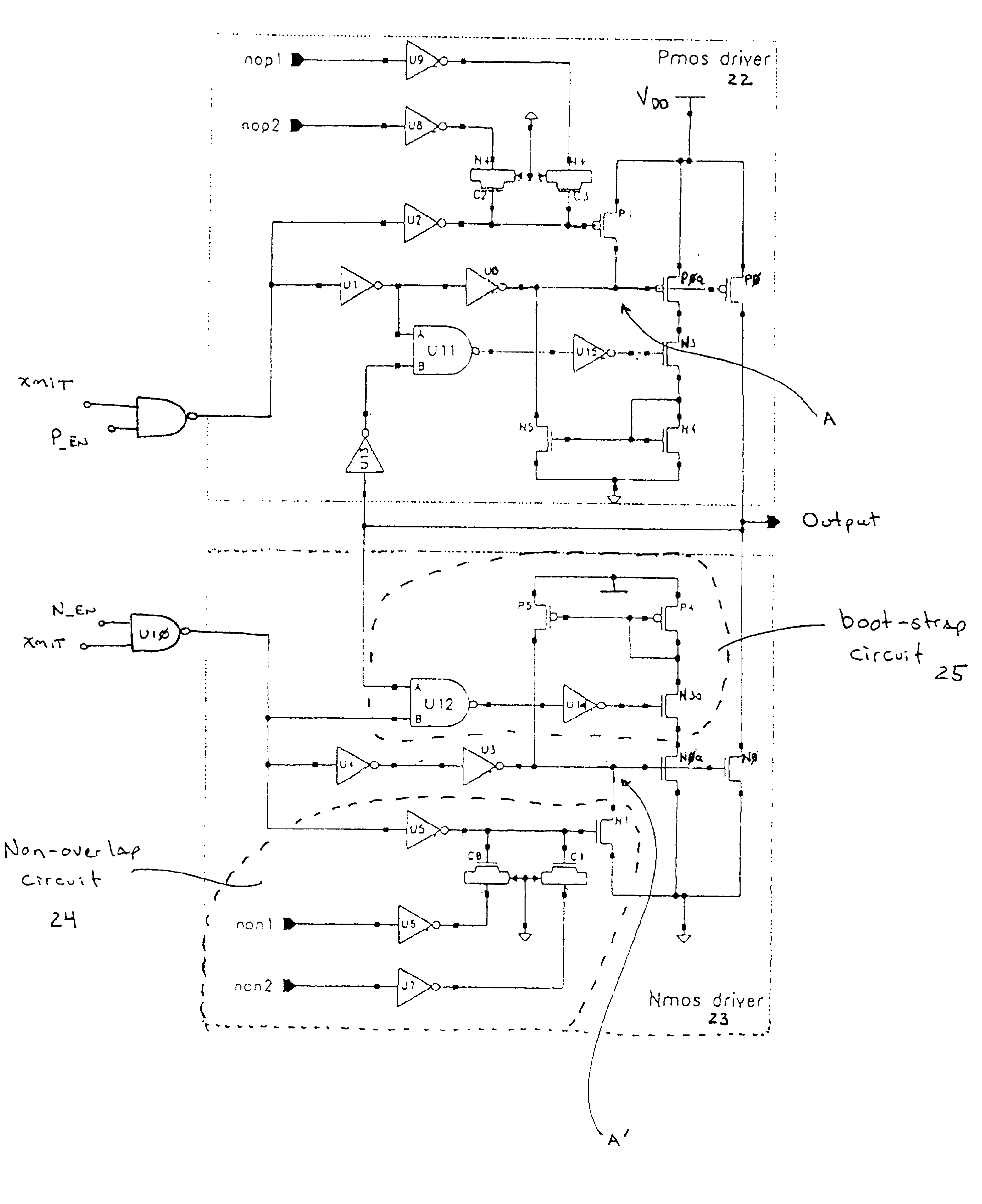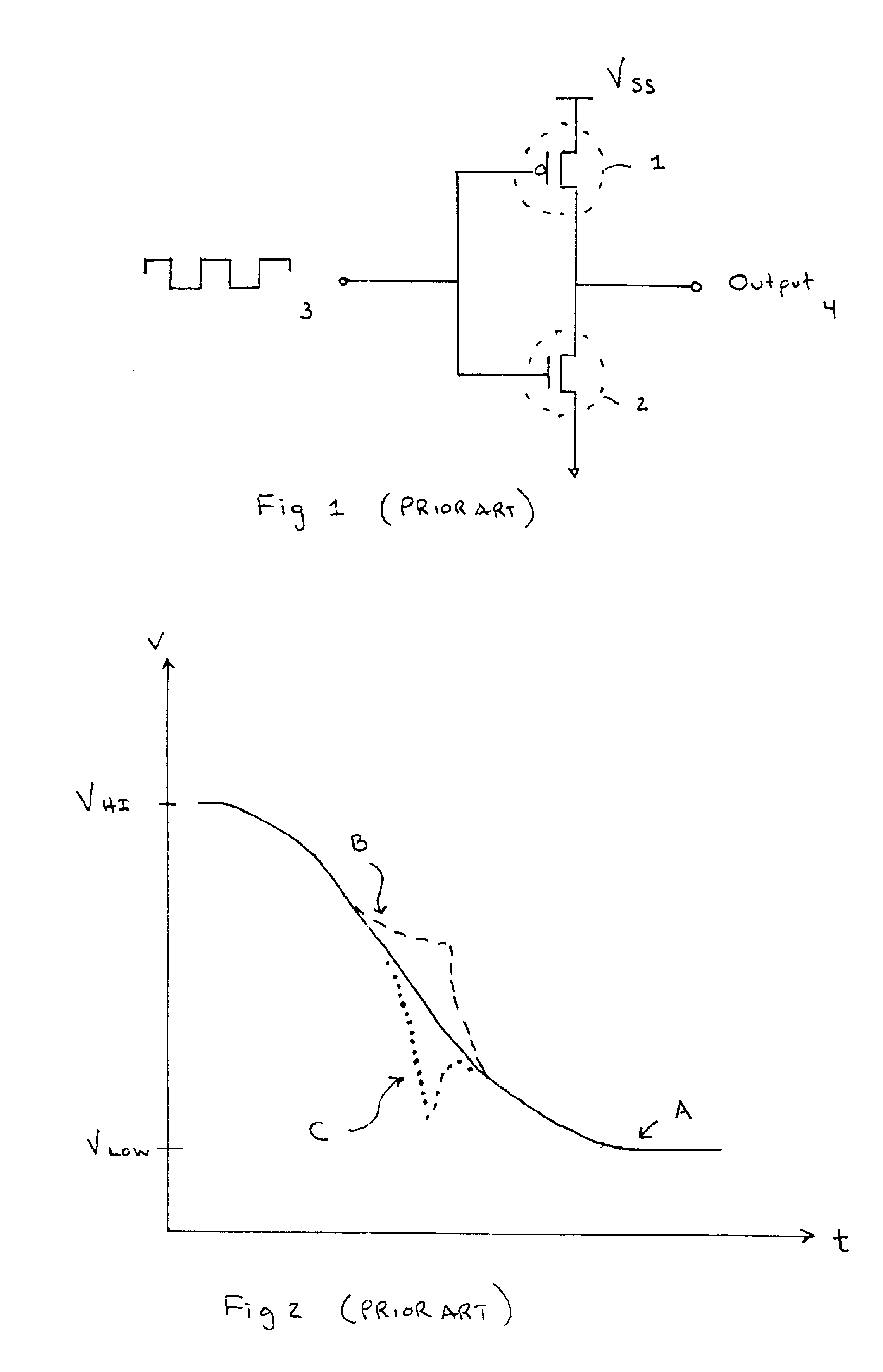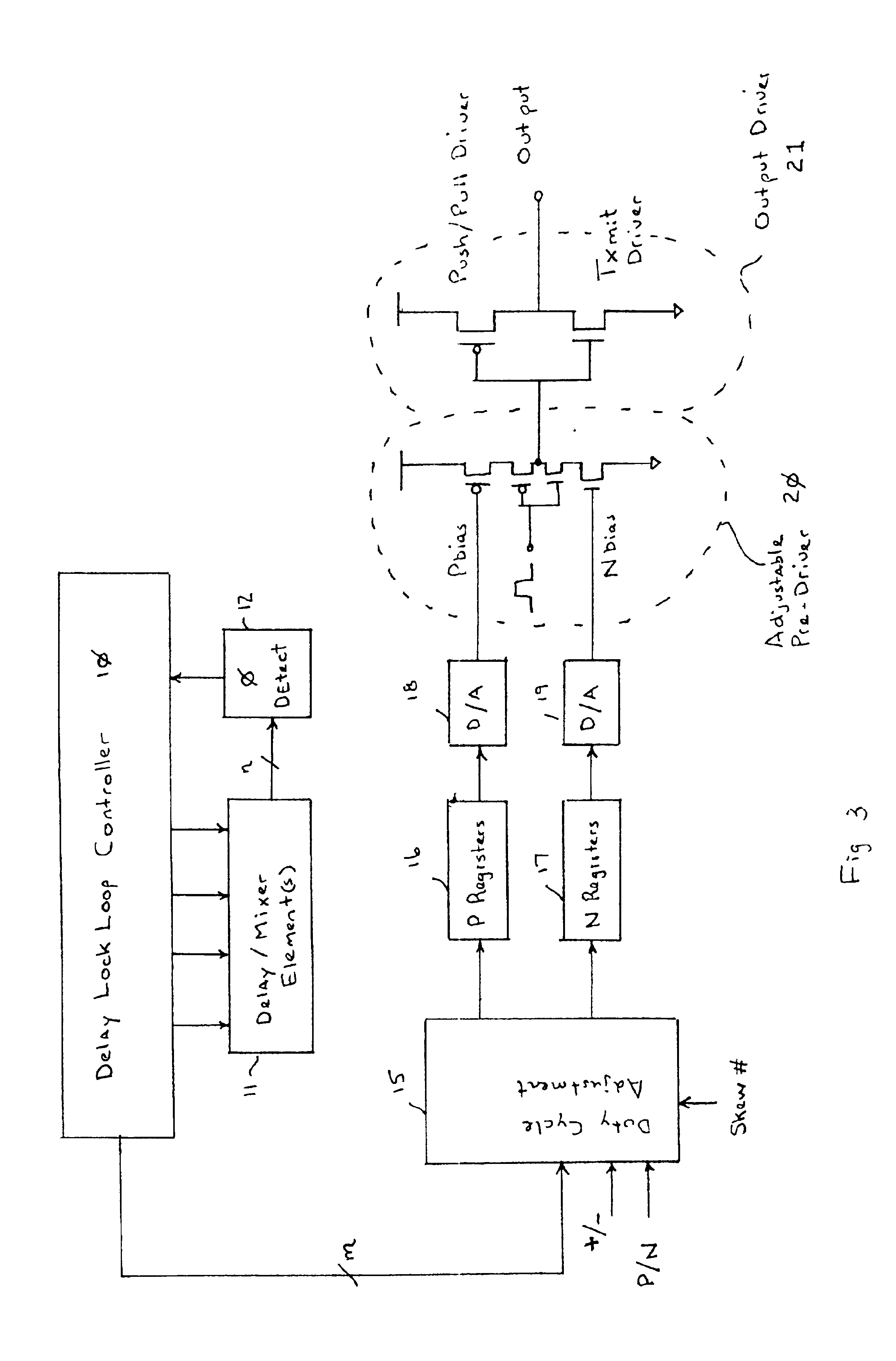Push-pull output driver
a push-pull output and driver technology, applied in the direction of logic circuits, pulse techniques, reliability increasing modifications, etc., can solve the problems of increasing the unacceptable of push-pull shoot-through noise and the corresponding charge dump via by-pass capacitor, and the acceptance of brute force methods. , the effect of increasing the noise of push-pull shoot-through and the acceptance of by-pass capacitors
- Summary
- Abstract
- Description
- Claims
- Application Information
AI Technical Summary
Problems solved by technology
Method used
Image
Examples
Embodiment Construction
FIG. 4 illustrates one embodiment of the present invention and includes the combination of a pre-driver circuit and a push-pull driver. The push-pull driver portion of the circuit comprises the combination of PMOS transistor P0 and NMOS transistor N0 connected between voltage source V.sub.DD and ground. The remainder of the circuit shown in FIG. 4 is one example of an improved pre-driver circuit designed according to the dictates of the present invention. This particular embodiment follows the conventional approach of open loop control for the push-pull driver. No voltage waveform sensing is used, but timing relationships established by a process detector, such as a DLL, are used to provide improved non-overlap protection.
Of note, the PMOS driver 22 and NMOS driver 23 are open drain structures. When connected in series, (i.e., when connecting the drains of PMOS driver 22 and NMOS driver 23, and connecting PMOS driver 22 to V.sub.DD and NMOS driver 23 to ground), PMOS driver 22 and N...
PUM
 Login to View More
Login to View More Abstract
Description
Claims
Application Information
 Login to View More
Login to View More - R&D
- Intellectual Property
- Life Sciences
- Materials
- Tech Scout
- Unparalleled Data Quality
- Higher Quality Content
- 60% Fewer Hallucinations
Browse by: Latest US Patents, China's latest patents, Technical Efficacy Thesaurus, Application Domain, Technology Topic, Popular Technical Reports.
© 2025 PatSnap. All rights reserved.Legal|Privacy policy|Modern Slavery Act Transparency Statement|Sitemap|About US| Contact US: help@patsnap.com



